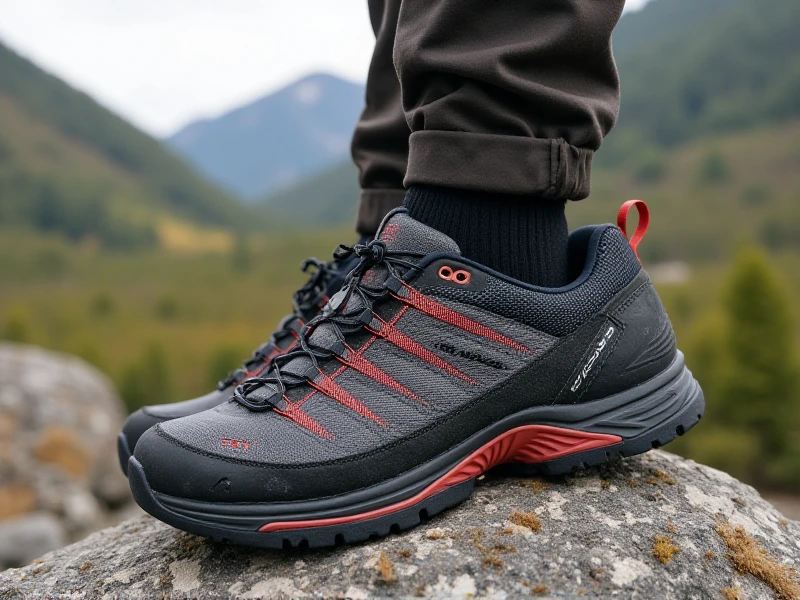Find Your Footing: The Ultimate Guide to Choosing Men's Hiking Shoes for Any Trail
2025-06-02

The call of the wild starts with your feet. Choosing the right pair of men's hiking shoes is arguably the most critical gear decision a hiker makes, impacting comfort, safety, and enjoyment on every trail. Forget blisters, sore feet, and unstable slips; discover how to select footwear that conquers terrain with you.
Why Specialist Footwear Matters: Beyond Ordinary Sneakers
Casual sneakers lack the specialized engineering needed for unpredictable trails. Quality men's hiking shoes deliver:
1. Rugged Traction: Deep, multi-directional lugs grip loose dirt, slick rocks, and muddy inclines, preventing dangerous slips unmatched by regular soles.
2. Essential Ankle Support: While low-cut options exist, strategically structured midsoles and supportive uppers protect ankles from rolls on uneven ground. High-top boots offer maximum stability for heavy loads or technical terrain.
3. Enduring Durability: Trail-toughened outsoles and abrasion-resistant uppers withstand rocks, roots, and brush, outlasting street shoes significantly.
4. Enhanced Protection: Rock plates shield your feet from sharp stones, while toe bumpers guard against accidental impacts. Water-resistant or waterproof membranes keep feet drier.
5. Optimized Comfort: Designed for varied terrain and sustained weight, they reduce foot fatigue significantly compared to non-hiking footwear.
Navigating Key Types of Men's Hiking Shoes
Understanding your hiking style and typical terrain guides the choice:
Hiking Shoes (Low-Cut): Offer lightweight agility, excellent ground feel, and quick drying. Ideal for day hikes on well-maintained paths, light loads, fast-and-light approaches, and three-season use. Less ankle support, but superb freedom.
Trail Runners: Ultra-lightweight, flexible, and breathable. Best for speed demons tackling easier trails or transitioning runners prioritizing pace. Support and durability are often less than dedicated hiking shoes.
Hiking Boots (Mid to High-Cut): Deliver superior ankle support, stability, and foot protection. The go-to choice for tackling rugged, rocky trails, carrying heavy backpacks (multi-day treks), traveling through scree, navigating snowfields, or providing winter warmth. Typically more weather-resistant.
Critical Features to Scrutinize
When evaluating men's hiking shoes, delve into these details:
Fit (The Golden Rule!): Your heel must lock securely without slippage, toes should have ample wiggle room (especially downhill), and the midfoot should feel snug but not constrictive. Essential to try with hiking socks. Shop late afternoon when feet swell slightly.
Waterproofing: Gore-Tex® or similar membranes keep feet dry in wet grass, mud, and rain – essential for cool, wet climates or stream crossings. However, they sacrifice breathability. Non-waterproof (breathable) hiking shoes for men excel in hot, arid climates or intense exertion where sweat management is key.
Outsole: Vibram® soles are renowned for exceptional grip and durability. Look for deep, multi-angled lugs appropriate for your usual terrain (wider spacing sheds mud better).
Midsole: EVA foam provides cushioning. Stiffer midsoles offer better support on rocky ground and under heavy packs, while softer ones prioritize comfort on smoother terrain.
Upper Material: Leather (nubuck, full-grain) excels in durability and weather protection but requires breaking in. Synthetics (mesh, nylon textiles) are lighter, dry faster, and breath better, but may wear quicker. Split-leather/synthetic blends are popular compromises.
Weight: A major factor for long distances or fast hikes. Lighter performance hiking shoes enhance speed but often trade off ruggedness.
Choosing Based on Your Hike Profile
Day Hikes / Light Trails: Lightweight hiking shoes or trail runners are often perfect.
Rugged Terrain / Heavy Packs / Multi-Day: Sturdy hiking boots are essential for support, protection, and durability.
Year-Round & All Conditions: Select durable materials, good tread, and often prioritize waterproofness.
Hot & Dry Climates: Prioritize breathable non-waterproof shoes to avoid sweat build-up.
Break-In & Care Are Non-Negotiable
Never hit the trail in brand-new footwear. Wear your chosen men's hiking shoes around the house, then on short walks, to allow materials to conform and spot any pressure points. Post-hike, remove insoles, brush off dirt, and air dry naturally away from direct heat. Re-treat leather periodically with recommended conditioners. Inspect soles and uppers for wear.
Invest in Your Foundation
Your feet propel every adventure. Investing time and research into finding the perfect pair of men's hiking shoes tailored to your needs pays off exponentially on the trail. Properly fitting, trail-appropriate footwear transforms challenging hikes into exhilarating journeys, enhances endurance, maximizes safety, and creates the foundation for countless miles of memorable wilderness exploration. Don't just hike; stride with confidence. Visit our gear shop today to explore curated collections from top brands designed to conquer any path. Remember to pair them with quality wool hiking socks and proactive blister care too!
Category: